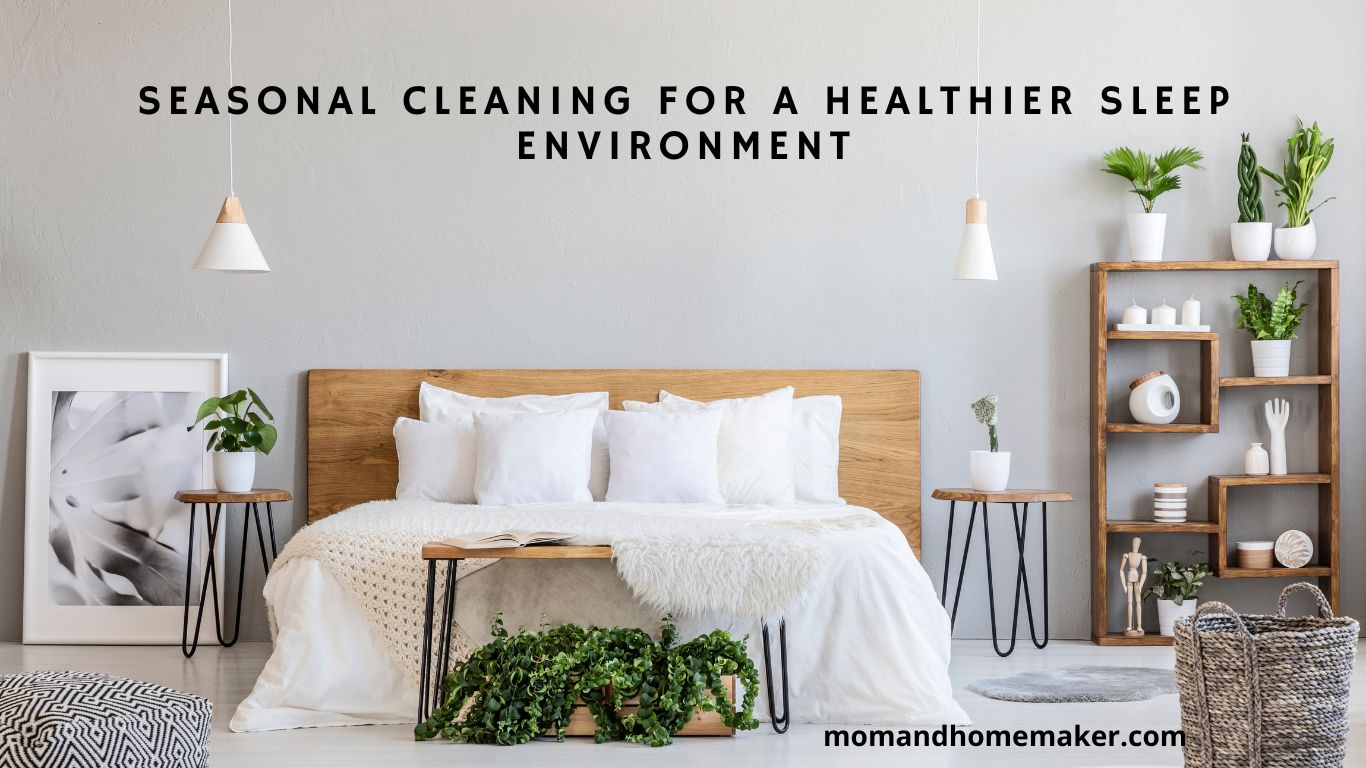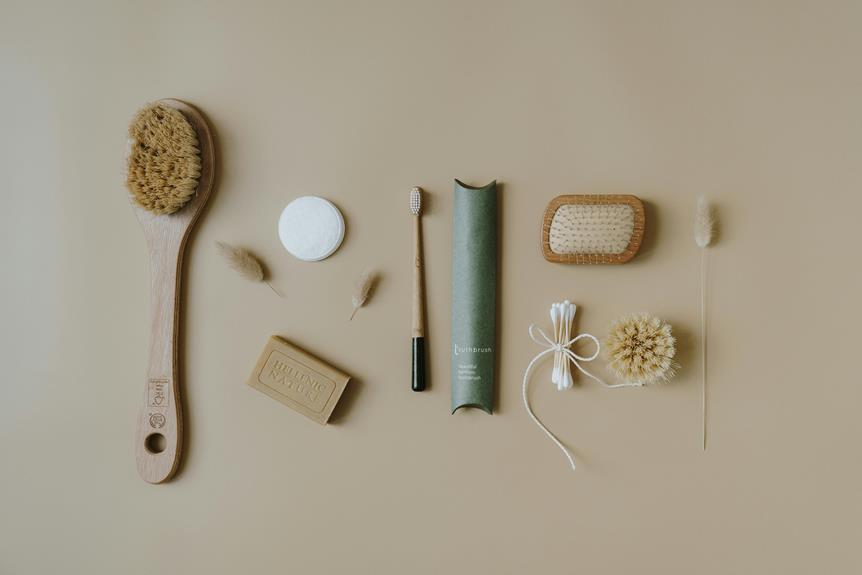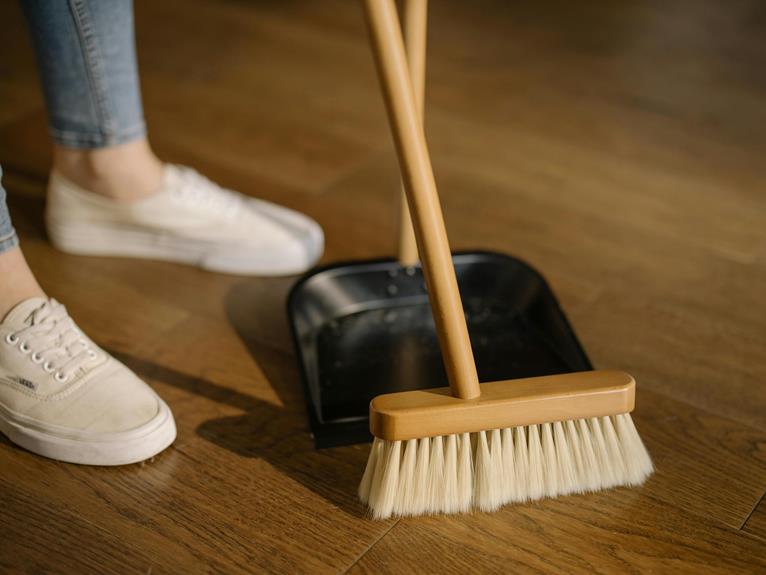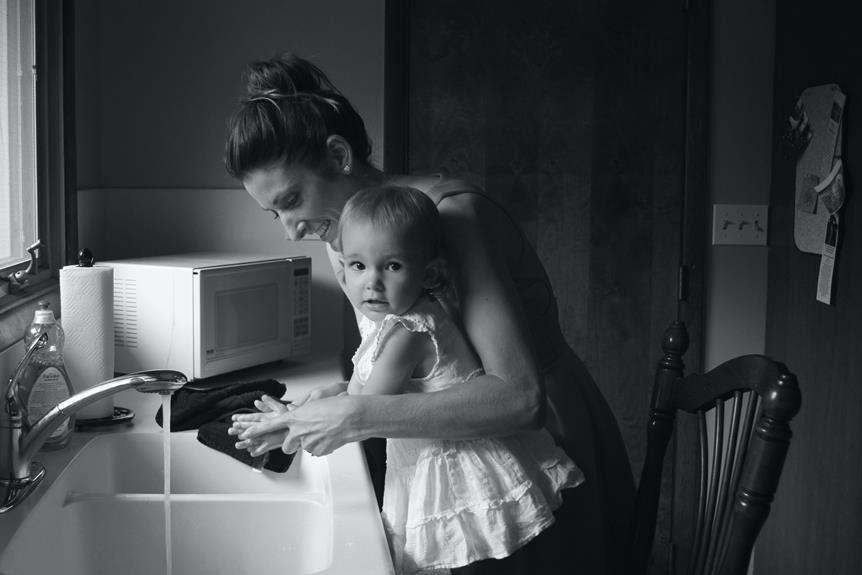A clean and clutter-free bedroom is vital for promoting better sleep, and seasonal cleaning plays a key role in maintaining a healthy sleep environment. As the weather and environmental conditions shift throughout the year, it’s important to adapt cleaning routines to address specific seasonal challenges.
From tackling dust and pollen in the spring to managing humidity and indoor air quality in the summer, fall, and winter, seasonal cleaning can significantly impact sleep quality.
We will discuss the significance of seasonal cleaning for creating a healthier sleep environment and offer actionable strategies for optimizing sleep hygiene through regular cleaning practices.
Assess Your Sleep Environment
Take a moment to evaluate your sleep environment and make any necessary changes for a better night’s sleep. Improving sleep quality starts with creating a sleep-friendly space. Begin by assessing your bedroom and optimizing the layout to create a peaceful and relaxing atmosphere.
Start by considering the amount of light in your room. Is it too bright? If so, consider using blackout curtains or blinds to block out unwanted light. This will create a more calming and conducive atmosphere for sleep.
Additionally, think about the noise levels in your bedroom. Are there any disruptive sounds that may be preventing you from falling asleep or waking you up during the night? If so, try using earplugs or a white noise machine to drown out the noise and promote better sleep.
Next, take a look at your mattress and bedding. Is your mattress comfortable and supportive? If not, it may be time to invest in a new one. Choose a mattress that suits your sleeping preferences and provides adequate support for your body. Also, select bedding that’s soft, breathable, and promotes a comfortable sleep temperature.
Lastly, consider the overall ambiance of your bedroom. Is it cluttered or disorganized? Clear away any unnecessary items and create a clean and peaceful space. Add some soothing elements like plants, soft lighting, or calming scents to further enhance the sleep environment.
Declutter Your Bedroom
Decluttering your bedroom is essential for creating a peaceful and relaxing sleep environment. By clearing away unnecessary items, you can transform your bedroom into a serene sanctuary that truly feels like your own.
Here are some practical tips to help you declutter and organize your space:
- Assess the lighting: Take a look at the lighting in your bedroom and make sure it aligns with your desired sleep environment. Consider using soft, warm-toned light bulbs to create a cozy and calming atmosphere.
- Invest in storage solutions: To keep your belongings organized and out of sight, invest in practical storage options. Utilize under-bed storage containers or hanging organizers to maximize space and reduce visual clutter.
- Create designated spaces: Assign specific areas or containers for different items in your bedroom. This will help you easily find what you need and prevent unnecessary clutter from accumulating.
- Keep surfaces clear: Make it a habit to regularly clear off surfaces like nightstands and dressers. Only keep essential items within reach, such as a lamp, book, or a glass of water.
- Minimize decorations: While decorations can add personality to your bedroom, too many can create a chaotic and cluttered atmosphere. Choose a few meaningful pieces and display them strategically.
By following these decluttering tips and organizing solutions, you can create a clean and peaceful sleep environment that promotes relaxation and a sense of belonging.
Clean Your Mattress
Regularly cleaning your mattress is important for both hygiene and comfort. It can help maintain the mattress’s durability, prevent allergies, and create a healthier sleep environment. There are several effective cleaning techniques and products available to remove dirt, stains, and odors from your mattress.
Start by vacuuming your mattress using the upholstery attachment to remove loose dirt and dust. Pay extra attention to seams and crevices, as these areas can harbor allergens and dust mites that may affect your sleep quality.
For stains, gently blot the affected area with a mixture of mild detergent and water using a clean cloth. Avoid using excessive water, as it can damage the mattress. Alternatively, you can use a specialized mattress cleaner designed for stain removal.
To freshen up your mattress, sprinkle baking soda over the surface and let it sit for a few hours. Baking soda helps absorb odors and moisture. Afterward, vacuum the mattress again to remove any remaining baking soda residue.
Vacuum and Dust Regularly
Keeping your bedroom clean and free from allergens is crucial for a healthy sleep environment. Regularly vacuuming and dusting are essential tasks that help eliminate hidden allergens and prevent the buildup of dust mites. By following a consistent cleaning routine, you can ensure that your sleeping space is free from irritants that can disrupt your restful slumber.
Here are some important points to consider:
- Vacuum maintenance: It’s important to regularly clean and replace vacuum filters to ensure optimal performance. Additionally, check the vacuum bag or canister frequently and empty it when it’s about three-quarters full.
- Dust mite prevention: To effectively capture even the tiniest dust mites, use a vacuum with a HEPA filter. Pay special attention to areas where dust mites thrive, such as mattresses, pillows, and upholstered furniture. Consider using allergen-proof covers on your mattress and pillows to create a barrier against dust mites.
- Cleaning supplies: Choose hypoallergenic or allergy-friendly cleaning products. Opt for microfiber cloths and dusters, as they’re effective at trapping and removing dust particles.
- Allergy control: Regular vacuuming and dusting can help reduce allergy symptoms like sneezing and congestion. During high pollen seasons, keep your windows closed to minimize allergens entering your bedroom.
Wash Your Bedding
Regularly washing your bedding is crucial for a clean and fresh sleep environment. It’s important to wash your bedding to ensure comfort, prevent allergies, maintain freshness, ensure hygiene, and promote relaxation.
Over time, your bedding collects sweat, dead skin cells, and dirt. This buildup can lead to discomfort and even trigger allergic reactions. By washing your bedding regularly, you can remove these irritants and create a healthier sleep environment.
Washing your bedding not only helps prevent allergies but also maintains freshness. The smell of freshly laundered sheets can be incredibly soothing and comforting, enhancing your overall sleep experience. It’s like climbing into a clean and cozy bed at the end of a long day.
Ensuring hygiene is essential for a good night’s rest. Dirty bedding can harbor bacteria and germs, which can negatively impact your health. By washing your bedding frequently, you can eliminate these potential hazards and promote a hygienic sleep environment.
Lastly, washing your bedding promotes relaxation. Climbing into a clean and fresh bed at the end of a long day can be incredibly calming. It allows you to unwind and prepare for a restful night’s sleep.
Choose Hypoallergenic Pillows
Maintaining a clean and fresh sleep environment is important, and one way to achieve that’s by choosing hypoallergenic pillows. These pillows are made with materials that are less likely to cause allergic reactions, avoiding common allergens like feathers and down. By using synthetic fibers or natural materials as pillow filling, hypoallergenic pillows can reduce the presence of dust mites, which can trigger allergies and disrupt sleep quality.
The benefits of hypoallergenic pillows go beyond reducing allergy symptoms. By minimizing exposure to allergens, these pillows can contribute to better sleep quality. Without interruptions caused by allergies, you can enjoy a more restful sleep and wake up feeling refreshed.
It’s important to note that hypoallergenic pillows aren’t only suitable for people with allergies but also for anyone who wants to create a healthier sleep environment.
When considering hypoallergenic pillows, look for specific examples and product recommendations that suit your preferences. Some popular options include pillows made with hypoallergenic memory foam, latex, or microfiber fillings. These materials provide excellent support and comfort while keeping allergens at bay.
Invest in a Mattress Protector
For a cleaner and more hygienic sleep environment, consider investing in a mattress protector. A mattress protector offers several benefits that contribute to a healthier sleep experience.
It provides waterproof protection, shielding your mattress from spills, accidents, and potential liquid damage. This not only extends the life of your mattress but also prevents the growth of mold and mildew.
A mattress protector acts as a barrier against allergens like dust mites, pollen, and pet dander, reducing the risk of allergies and respiratory issues. It also offers stain resistance, making it easier to clean and maintain your mattress.
A quality mattress protector is durable and long-lasting, protecting your investment for years to come.
Lastly, it’s easy to maintain as it can be easily removed and washed, ensuring a fresh and clean sleeping surface.
Purify the Air in Your Bedroom
Improve the air in your bedroom to enhance your sleep environment. Creating a clean and fresh atmosphere won’t only improve your sleep quality but also make you feel more connected to your space. Here are some ways you can do this:
- Get air purifiers: These devices help remove airborne pollutants and allergens, ensuring that you breathe clean and pure air.
- Bring in indoor plants: Plants act as natural air purifiers, absorbing carbon dioxide and releasing oxygen. They also add a touch of nature and beauty to your bedroom, creating a calming and peaceful atmosphere.
- Use essential oils: Diffuse essential oils like lavender or eucalyptus to create a pleasant scent and promote relaxation. These oils have soothing properties that can help you unwind and prepare for a restful sleep.
- Try natural air fresheners: Instead of using synthetic air fresheners with harsh chemicals, choose natural alternatives like baking soda, vinegar, or citrus fruits. These options will freshen the air without any negative effects on your health.
- Ensure proper ventilation: Keep your bedroom well-ventilated by opening windows regularly or using ventilation systems. This will circulate fresh air and remove any unpleasant odors or pollutants.
Eliminate Pet Dander and Hair
Maintaining a clean and fresh sleeping environment is important, and one way to achieve this is by effectively eliminating pet dander and hair. While pets are beloved family members, their dander and hair can trigger allergies and disrupt your sleep. By reducing allergens in your bedroom, you can create a healthier sleep environment that promotes better rest and rejuvenation.
To eliminate pet dander and hair, here are some practical tips:
- Establish a regular grooming routine for your pets. Regularly brushing them will help remove loose hair and minimize the amount of dander they shed.
- Invest in air purifiers specifically designed to capture pet allergens. These devices can filter out pet dander and other airborne particles, ensuring cleaner air in your bedroom.
- Use pet-friendly cleaning products that are safe for both your pets and your sleeping environment. Avoid harsh chemicals that can irritate your pet’s skin and respiratory system.
- Regularly vacuum your bedroom, paying special attention to areas where your pet spends most of their time. Use a vacuum cleaner with a HEPA filter to effectively trap pet dander and hair.
By following these steps, you can create a sleep environment that’s free from pet allergens, allowing you to sleep soundly and wake up refreshed.
Control Humidity Levels
Maintaining proper humidity levels in your bedroom is important for creating a comfortable and healthy sleep environment. Here are some benefits and tips for controlling humidity:
- Using dehumidifiers effectively: Investing in a good quality dehumidifier can help regulate the moisture in your bedroom. Place it in a central location, away from walls and furniture, for optimal performance. Set the humidity level between 30% to 50% to prevent mold growth and respiratory issues.
- Natural ways to lower humidity: Besides using dehumidifiers, there are natural methods to reduce humidity in your bedroom. Opening windows and using fans can promote air circulation and decrease moisture. Additionally, incorporating plants like Boston ferns and peace lilies can absorb excess moisture in the air.
High humidity can negatively impact your sleep quality. It can make your bedroom feel stuffy, promote sweating, and increase the chances of mold growth. On the other hand, low humidity can also affect your sleep. It can cause dryness in your throat and nasal passages, leading to discomfort and snoring.
Achieving the right balance of humidity in your bedroom is crucial for a good night’s sleep. By controlling humidity levels effectively through the use of dehumidifiers or natural methods, you can create a sleep environment that promotes relaxation, comfort, and overall well-being.
Replace Old or Worn-Out Pillows
To improve the comfort and cleanliness of your sleep environment, it’s important to replace any old or worn-out pillows. Pillows play a crucial role in supporting your head and neck, ensuring a restful and rejuvenating sleep.
Over time, pillows lose their shape, firmness, and ability to provide adequate support, resulting in discomfort and restless nights. By replacing your old or worn-out pillows, you can enhance your sleep quality and overall well-being.
When choosing new pillows, consider various options that suit your preferences and needs. Here’s a comparison of different pillow types to help you make an informed decision:
- Memory Foam: These pillows contour to your head and neck, providing personalized support.
- Down: Soft and fluffy, down pillows offer a luxurious feel.
- Latex: With a balance of support and comfort, latex pillows also have natural hypoallergenic properties.
- Buckwheat: Firm and supportive, buckwheat pillows conform to the shape of your head.
- Polyester: Affordable and easy to clean, polyester pillows may not last as long as other options.
Regardless of the pillow type you choose, proper pillow care is essential to maintain their lifespan and comfort. Regularly fluffing and rotating your pillows helps distribute the filling evenly and prevents them from becoming lumpy. Using pillow protectors and washing them regularly can keep your pillows clean and free from allergens.
Deep Clean Your Carpets and Rugs
Consider scheduling a deep cleaning for your carpets and rugs to maintain a clean and healthy sleep environment. Deep cleaning your carpets and rugs has several benefits for both your sleep and overall well-being.
Here’s why you should prioritize carpet maintenance and rug care as part of your seasonal cleaning routine:
- Removes trapped allergens: Over time, carpets and rugs can collect dust mites, pet dander, and other allergens that can impact your sleep quality. Deep cleaning eliminates these trapped particles, creating a healthier sleep environment.
- Restores freshness: Regular foot traffic can leave your carpets and rugs looking dull and worn out. A deep clean can refresh their appearance, making your bedroom feel more inviting and cozy.
- Reduces odors: Carpets and rugs can absorb odors from pets, spills, and everyday living. Deep cleaning helps get rid of these odors, creating a fresher and more pleasant sleeping environment.
- Extends the lifespan: Deep cleaning removes dirt and debris that can wear down carpet fibers, ultimately extending their lifespan. By investing in regular carpet maintenance, you can enjoy your carpets and rugs for years to come.
Remove and Clean Window Treatments
Inspect your window treatments and determine if they need to be removed and cleaned. Proper maintenance of curtains, blinds, drapes, and window shades is crucial for a clean and healthy sleep environment.
Clean window coverings not only improve the look of your room but also promote better sleep by reducing allergens and improving air quality.
To understand the importance of cleaning your window treatments, refer to the table below for the recommended cleaning frequency for different types of window coverings:
| Window Treatment | Cleaning Frequency |
|---|---|
| Curtains | Every 3 months |
| Blinds | Every 6 months |
| Drapes | Every 6 months |
| Window Shades | Every 6 months |
Regular cleaning of your window coverings prevents the accumulation of dust, dirt, and allergens, ensuring a healthier sleep environment. Follow the manufacturer’s instructions for washing or dry cleaning curtains and drapes. For blinds and window shades, use a damp cloth or a vacuum cleaner with a brush attachment to remove dust and debris.
Keep Your Bedroom Free of Pests
To ensure a pest-free bedroom, follow these effective prevention strategies.
Start by maintaining cleanliness in your bedroom. Regularly vacuum, dust, and wipe down surfaces to eliminate potential food sources and hiding places for pests. Inspect your bedroom for any cracks or gaps in walls, windows, or doors, and seal them properly to prevent pests from entering.
Store all food items in sealed containers to avoid attracting ants or rodents, which can lead to infestations. Keep your bedroom tidy and organized to minimize hiding spots for pests.
Lastly, regularly inspect your bedroom for signs of infestations, such as droppings, chewed wires, or unpleasant odors. If you suspect an infestation, promptly contact a professional pest management service.
Maintain a Regular Cleaning Schedule
Keeping your sleep environment clean is essential for a good night’s sleep. Establishing a regular cleaning schedule has numerous benefits, including reducing allergens, preventing dust and dirt buildup, and creating a peaceful atmosphere.
To stay organized, it’s helpful to create a cleaning checklist. This will remind you of the areas that need attention and help you stay focused. Break down the tasks into daily, weekly, and monthly categories to make them more manageable.
Incorporating cleaning into your daily routine is another effective strategy. Set aside a specific time each day to tackle small cleaning tasks, such as making your bed, wiping down surfaces, and decluttering. By making cleaning a regular part of your day, it becomes a habit and ensures that your sleep environment stays fresh and inviting.
Consider Professional Deep Cleaning Services
If you want a thorough and efficient cleaning of your sleep environment, consider hiring professional deep cleaning services. These services offer several benefits that regular cleaning can’t match. Here’s why you should think about bringing in professional cleaners for your sleep space:
- Expertise and Experience: Professional cleaners have the knowledge and experience to effectively clean and sanitize your sleep environment. They’re trained in the deep cleaning process and know the best techniques and products to use for different surfaces.
- Attention to Detail: Professional cleaners pay close attention to every corner, leaving no area untouched. They’ll meticulously clean your mattress, pillows, upholstery, and carpets, eliminating dust mites, allergens, and other contaminants that can impact your sleep quality.
- Cost-Effective: While there’s a cost associated with hiring professional deep cleaning services, it can be a wise investment in the long run. Professional cleaning can extend the lifespan of your sleep environment, saving you money on replacements.
- Time-Saving: Thoroughly cleaning your sleep environment can be time-consuming and exhausting. By hiring professionals, you can save time and energy, allowing you to focus on other important aspects of your life.
- Peace of Mind: Knowing that professionals have deep-cleaned your sleep environment can give you peace of mind. You can rest easy, knowing that you’re sleeping in a clean and healthy space.
When considering professional deep cleaning services, it’s important to factor in the cost. While the price may vary depending on the size of your sleep environment and the extent of cleaning required, the benefits of a professionally cleaned sleep space outweigh the expense.
Dusting and Cleaning Surfaces
Maintaining a clean and healthy sleep environment requires an effective approach to dusting and cleaning surfaces. To ensure a thorough cleaning and eliminate hidden allergens, it’s important to follow a systematic process. By regularly dusting and cleaning surfaces in your bedroom, you can promote better rest.
To achieve a comprehensive cleaning, it’s helpful to create a cleaning checklist. Here is a simple table outlining the key areas to focus on:
| Surface | Cleaning Method | Frequency | Notes |
|---|---|---|---|
| Furniture | Dusting with a microfiber cloth | Once a week | Use a microfiber cloth to capture dust |
| Beddings | Washing and drying on high heat | Once a month | Use hot water to kill dust mites |
| Walls | Wiping with a damp cloth | Twice a year | Pay special attention to corners and baseboards |
| Electronics | Use a gentle electronic cleaner | Once a month | Unplug before cleaning to avoid damage |
Regularly dusting furniture with a microfiber cloth helps capture and remove dust particles. Washing beddings on high heat kills dust mites, creating a cleaner sleep environment.
Wiping walls with a damp cloth twice a year ensures a fresh and clean atmosphere, with extra attention given to corners and baseboards.
Lastly, using a gentle electronics cleaner to wipe down electronic devices once a month keeps them free from dust and dirt.
Conclusion
The air smells clean and the mattress is free of dust, creating a healthier sleep environment.
The windows let in just the right amount of natural light, setting the perfect ambiance for a good night’s sleep.
With this improved sleep sanctuary, you’ll effortlessly drift off into dreamland and wake up feeling refreshed and ready to tackle the day.
Enjoy the sweet dreams that await you in your newly cleaned bedroom.















